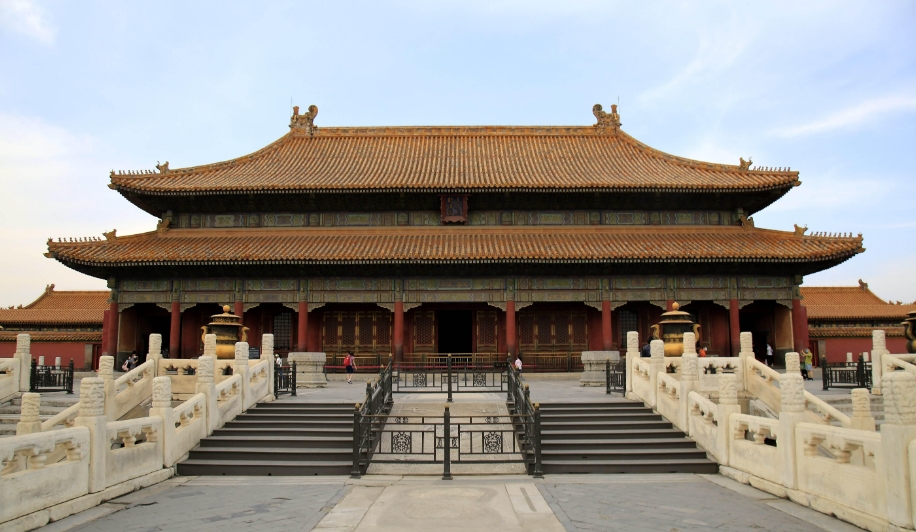
The Forbidden City: An Architectural Marvel at the Heart of Beijing
Nestled in the very heart of Beijing, China, the Forbidden City stands as a monumental testament to the grandeur and sophistication of Chinese imperial architecture. More than just a palace, it is the largest and best-preserved ancient wooden structure in the world, a UNESCO World Heritage Site, and a fascinating window into the social, political, and cultural landscape of late dynastic China.
Location and Layout: A City Within a City
The Forbidden City earns its name from its historical inaccessibility. For centuries, it was off-limits to commoners, a meticulously planned and heavily guarded sanctuary reserved exclusively for the emperor, his family, and his court. This "city within a city" sprawls across 178 acres (72 hectares), boasting a nearly perfect rectangular layout oriented along a north-south axis, reflecting the cosmological principles of ancient China. Enclosed by imposing walls and a moat, the Forbidden City contains an astounding 980 buildings and over 8,700 rooms, each intricately designed and laden with symbolic meaning.
A Journey Through Time: Dynasties and Design
Construction of this architectural marvel began in 1406 during the reign of the Yongle Emperor of the Ming Dynasty, reaching completion in 1420. For nearly five centuries, it served as the imperial palace for 24 emperors, spanning both the Ming and subsequent Qing Dynasties. This rich history is embedded within the very fabric of the Forbidden City. Its design, while adhering to traditional Chinese architectural principles, exhibits subtle stylistic evolutions reflecting the changing tastes and preferences of different emperors and periods.
Unveiling the Symbolism: Ritual and Court Culture
Every element of the Forbidden City, from its grand courtyards and majestic halls to the intricate carvings and vibrant colors adorning its structures, speaks volumes about the ritualistic and hierarchical nature of imperial China. The meticulous attention to detail is not arbitrary; it embodies deeply ingrained cosmological beliefs, social order, and the emperor's supreme authority.
- The North-South Axis: This central axis symbolizes the emperor's connection to the heavens and his role as the intermediary between heaven and earth. The most important buildings, including the Hall of Supreme Harmony (used for grand ceremonies), are situated along this axis, reinforcing the emperor's central position within the cosmic and political order.
- Courtyard Arrangements: The Forbidden City's numerous courtyards, each with its designated purpose and level of access, served as physical manifestations of the strict social hierarchy. They regulated the flow of people and activities, reflecting the rigid protocol governing interactions within the imperial court.
- Color Symbolism: The dominant use of yellow, the color associated with the emperor, reinforces his status as the "Son of Heaven." Similarly, red, symbolizing good fortune and happiness, adorns many structures, while green represents growth and harmony. These colors, along with intricate animal motifs and auspicious symbols, infuse the Forbidden City with layers of meaning and create a visually stunning spectacle.
The Forbidden City Today: A Legacy Preserved
Today, the Forbidden City stands as a magnificent museum, its gates open to the world. It is a testament to China's rich cultural heritage and architectural ingenuity, attracting millions of visitors each year. Wandering through its grand halls and serene gardens offers an unparalleled glimpse into a bygone era of imperial power and splendor, inviting visitors to unravel the mysteries and marvel at the enduring legacy of this architectural masterpiece.
Q&A
Q1: What makes the Forbidden City's layout significant?
A1: The Forbidden City's nearly perfect rectangular layout, oriented along a north-south axis, is not merely a design choice. It reflects ancient Chinese cosmological principles, emphasizing the emperor's role as the link between heaven and earth and placing him at the center of the cosmic and political order.
Q2: How does the Forbidden City reflect the social hierarchy of imperial China?
A2: The Forbidden City's organization embodies the strict social hierarchy of the time. The arrangement of courtyards, with varying levels of access and designated purposes, physically mirrored the social order and regulated interactions within the imperial court.
Q3: Why is the Forbidden City considered more than just a palace?
A3: The Forbidden City transcends its identity as a palace to become a symbol of Chinese civilization. It represents architectural ingenuity, artistic brilliance, and the cultural values of a bygone era, offering invaluable insights into China's history and serving as a powerful reminder of its rich heritage.